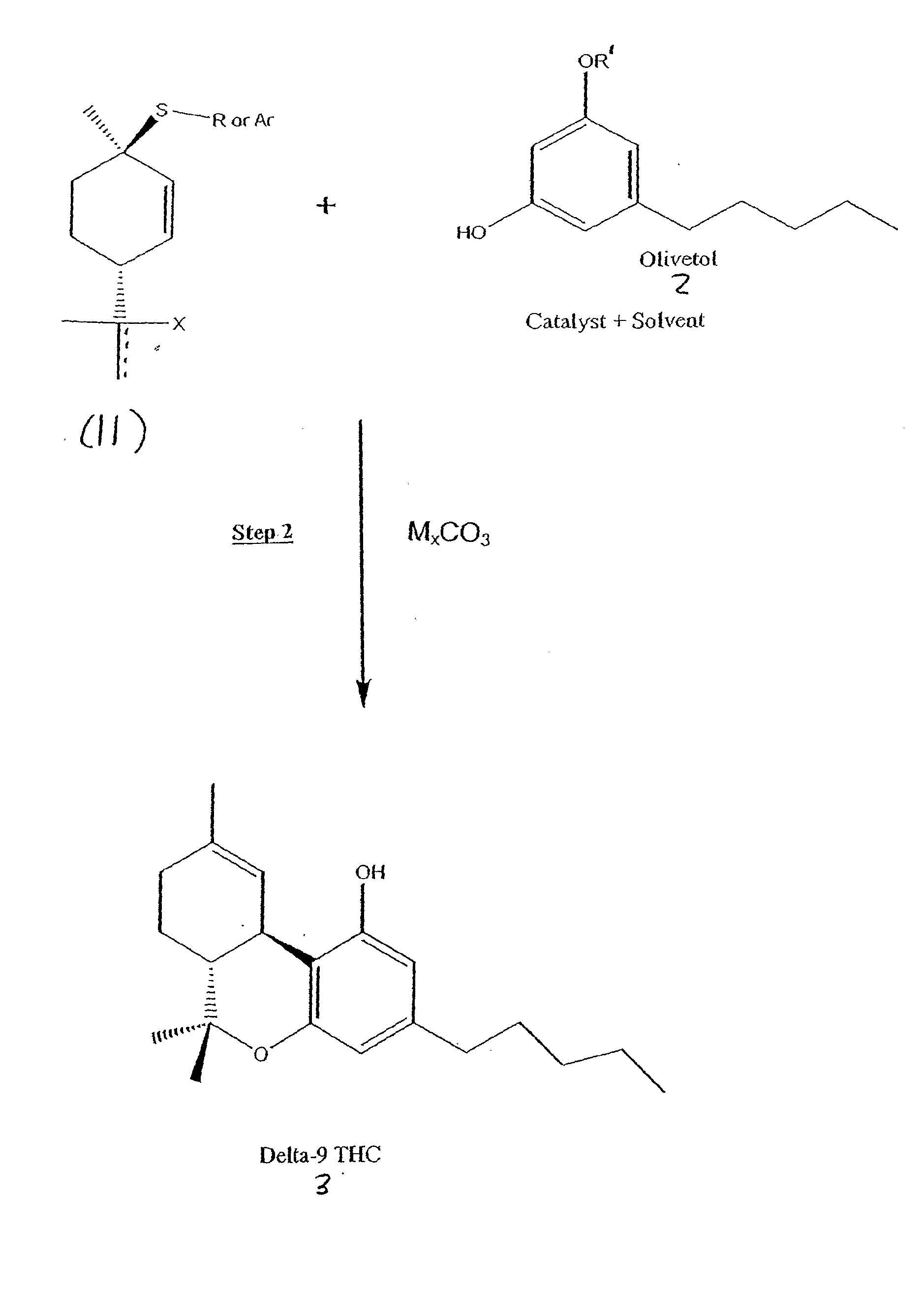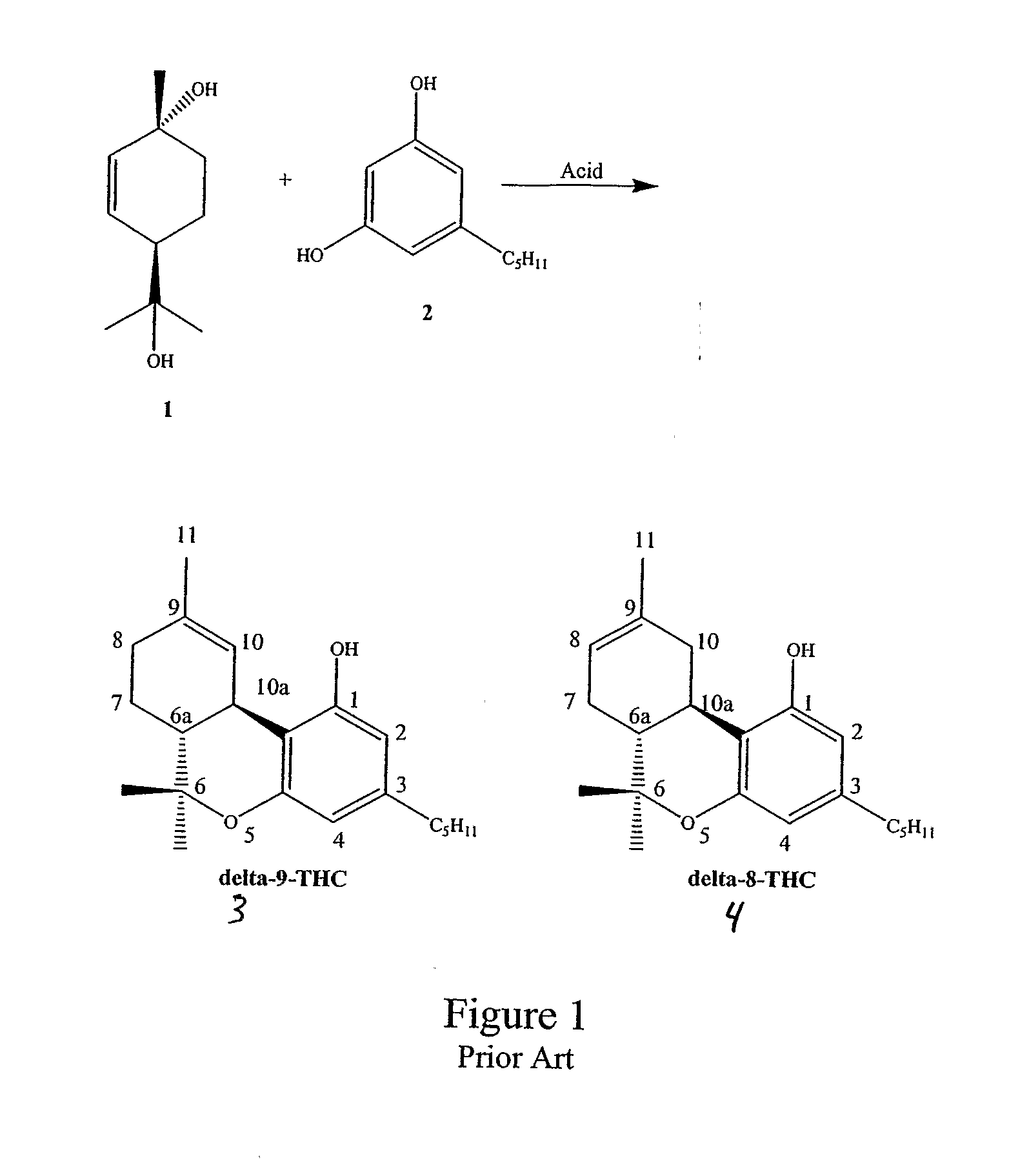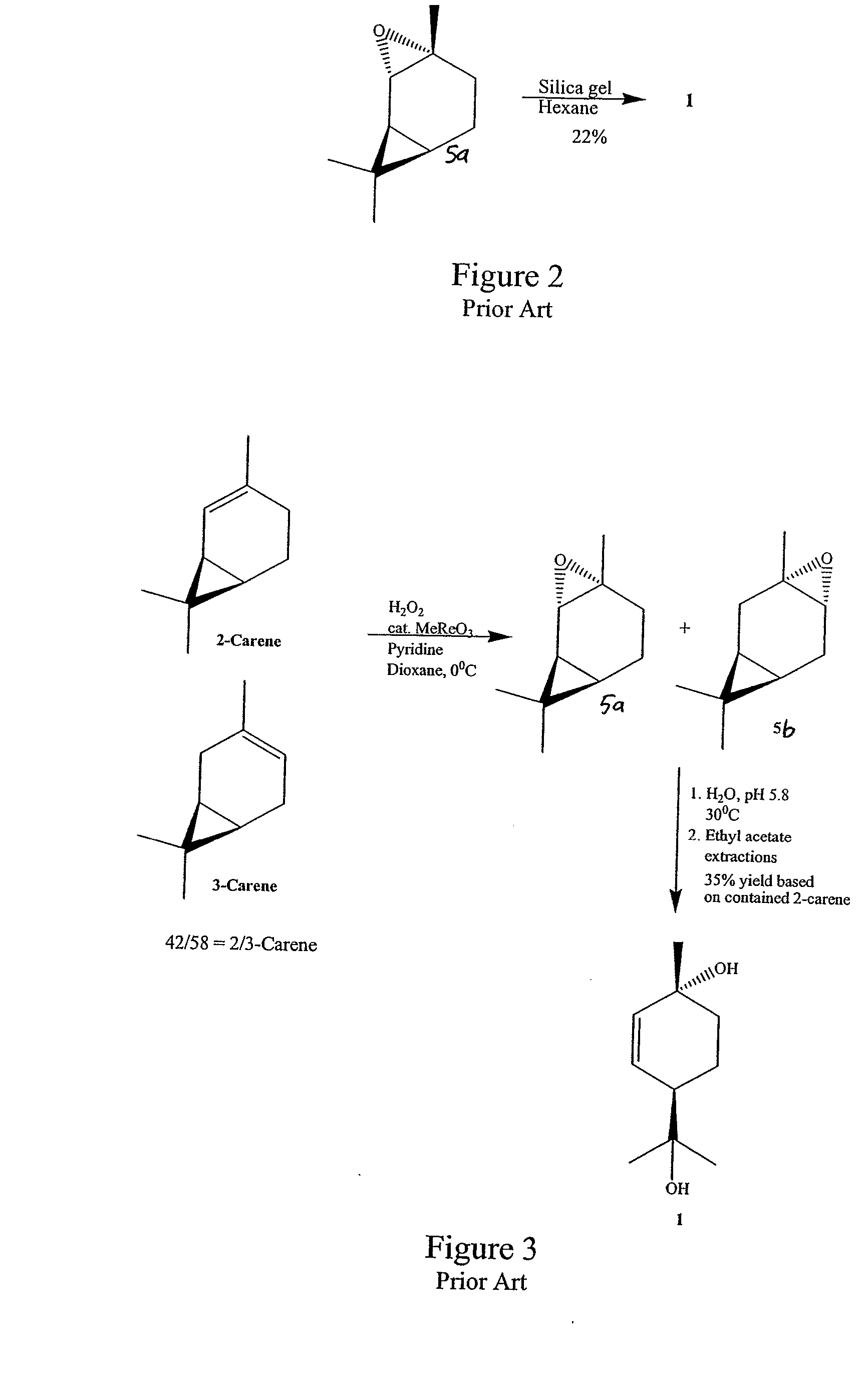Methods and Intermediates for the Synthesis of Delta-9 Tetrahydrocannabinol
a technology of tetrahydrocannabinol and delta9, which is applied in the field of intermediates used in the synthesis of delta9 tetrahydrocannabinol, can solve the problems of low yield, tedious purification, and low yield of using this method, and achieve the effect of improving the ratio of 9-thc/8-th
- Summary
- Abstract
- Description
- Claims
- Application Information
AI Technical Summary
Benefits of technology
Problems solved by technology
Method used
Image
Examples
example 1
[0044] The reaction of the carbonate 6 shown in FIGS. 6 & 7 with olivetol in the presence of various Lewis acids was examined using scheme shown in FIG. 7. The results are shown in Table 1 below.
[0045] Use of BF3-Et2O initially gave a moderate yield of THC by HPLC with an approximately 2 / 1 ratio of Δ9-THC / Δ8-THC (entry 1). The addition of the inorganic K2CO3 led to an enhanced ratio (entry 2), while use of the organic base pyridine led to a reversal in the selectivity (entry 3). The presence of molecular sieves did not improve the ratio significantly (entry 4).
[0046] The use of BF3-THF gave a higher ratio than BF3-Et2O (entry 5). The addition of K2CO3 to the reaction gave a synthetically useful ratio of Δ9-THClΔ8-THC (entry 6). The promising results with BF3-THF led us to further examine this complex. Running the reaction at ambient temperature or using two equivalents of BF3-THF (versus one equivalent) did not improve the overall yield (entries 7 and 8). Use of organic soluble hi...
example 2
Preparation of Carbonate 6 {(4aR,8aS)-4,4,7-trimethyl-4a,5,6,8a-tetrahydro-4H-benzo[d][1,3]dioxin-2-one}
[0048] To a nitrogen purged 250 mL four neck round bottom flask equipped with a magnetic stir bar, nitrogen inlet adapter, and thermometer was added 2.00 g (10.7 mmol) of diol 1 and 40 mL of pyridine. The solution was cooled to 5° C. Di-tert-butyl dicarbonate (5.84 g, 26.8 mmol) was then added followed by a 7 mL pyridine rinse. 4-(Dimethylamino)pyridine (0.31 g, 2.5 mmol) was then added at which point CO2 evolution was evident. After stirring for 3.75 hours at 0-10° C., the reaction was allowed to warm to ambient temperature and stirred for an additional 2 hours. Saturated aqueous sodium chloride (30 mL) was then added over ca. 2 minutes at ambient temperature. Water (10 mL) was added to dissolve the solids. The quenched reaction mixture was then extracted with t-butyl-methyl ether (3×40 mL). The combined organic extracts were washed with 40 mL of water. The organic and aqueous la...
example 3
Conversion of Carbonate 6 to Δ9-THC 3 using BF3-Et2O / K2CO3 / CH2Cl2
[0049] To a 25 mL round bottom flask equipped with a magnetic stir bar and septa was added 35 mg (0.18 mmol) of 6, 35 mg (0.19 mmol) of olivetol, and 0.12 g (0.87 mmol) of K2CO3. The flask was then placed under a nitrogen atmosphere and 5 mL of CH2Cl2 was added. The suspension was then cooled to an external temperature of 0-10° C. BF3-Et2O (23 microliters, 0.18 mmol) was then added via microsyringe. The suspension gradually turned light brown. After 2 hours, 5 mL of 5% aqueous Na2CO3 was added to the reaction. The reaction was stirred for 15 minutes, the layers were separated and the organic layer was dried over Na2SO4. The dried organic layer was then purged with nitrogen to remove the majority of the solvent. Area percent HPLC analysis of the resulting oil indicated a 6.3 / 1 ratio of Δ9-THC / Δ8-THC.
PUM
| Property | Measurement | Unit |
|---|---|---|
| Temperature | aaaaa | aaaaa |
| Temperature | aaaaa | aaaaa |
| Solubility (mass) | aaaaa | aaaaa |
Abstract
Description
Claims
Application Information
 Login to View More
Login to View More - R&D
- Intellectual Property
- Life Sciences
- Materials
- Tech Scout
- Unparalleled Data Quality
- Higher Quality Content
- 60% Fewer Hallucinations
Browse by: Latest US Patents, China's latest patents, Technical Efficacy Thesaurus, Application Domain, Technology Topic, Popular Technical Reports.
© 2025 PatSnap. All rights reserved.Legal|Privacy policy|Modern Slavery Act Transparency Statement|Sitemap|About US| Contact US: help@patsnap.com



